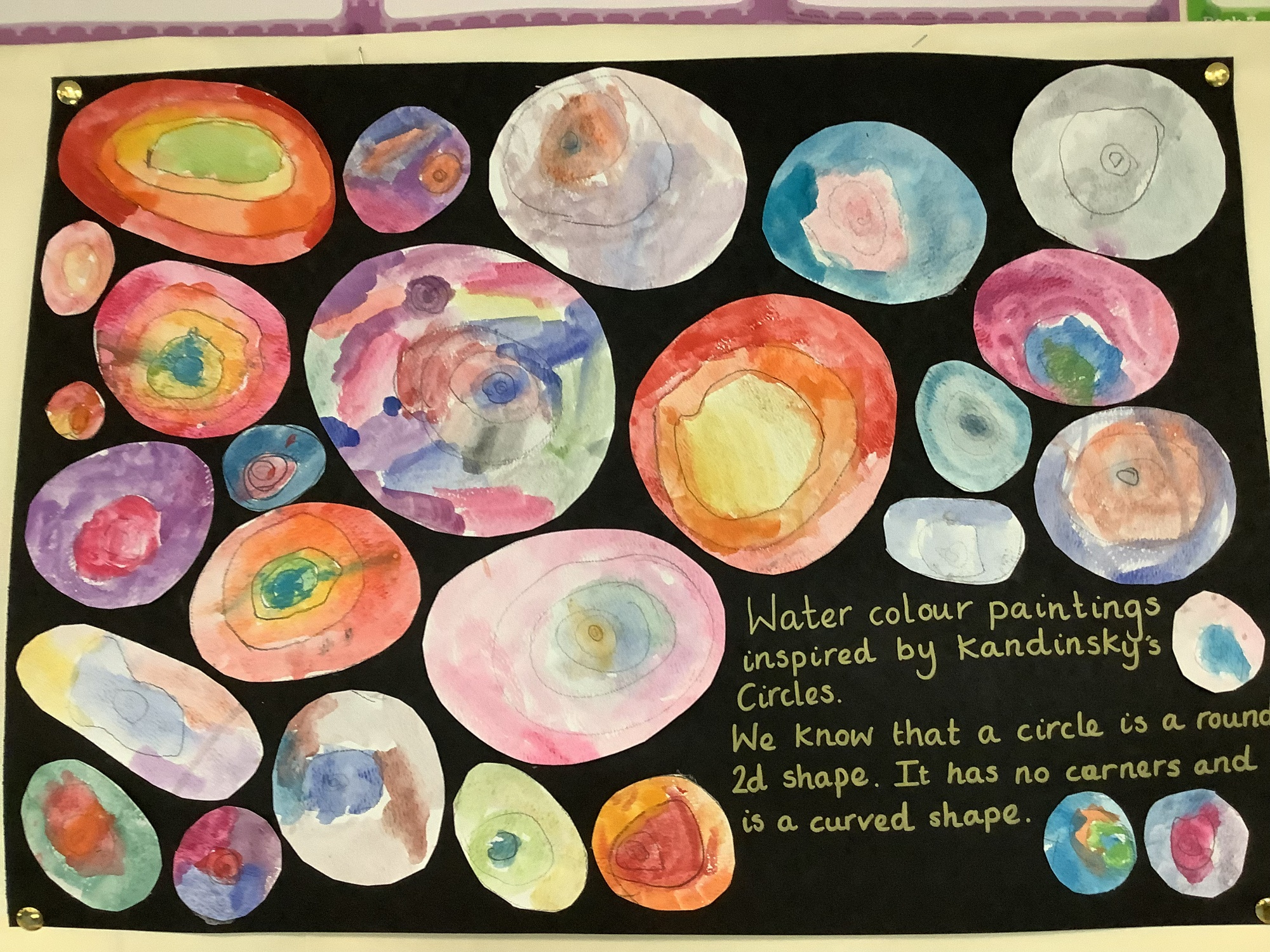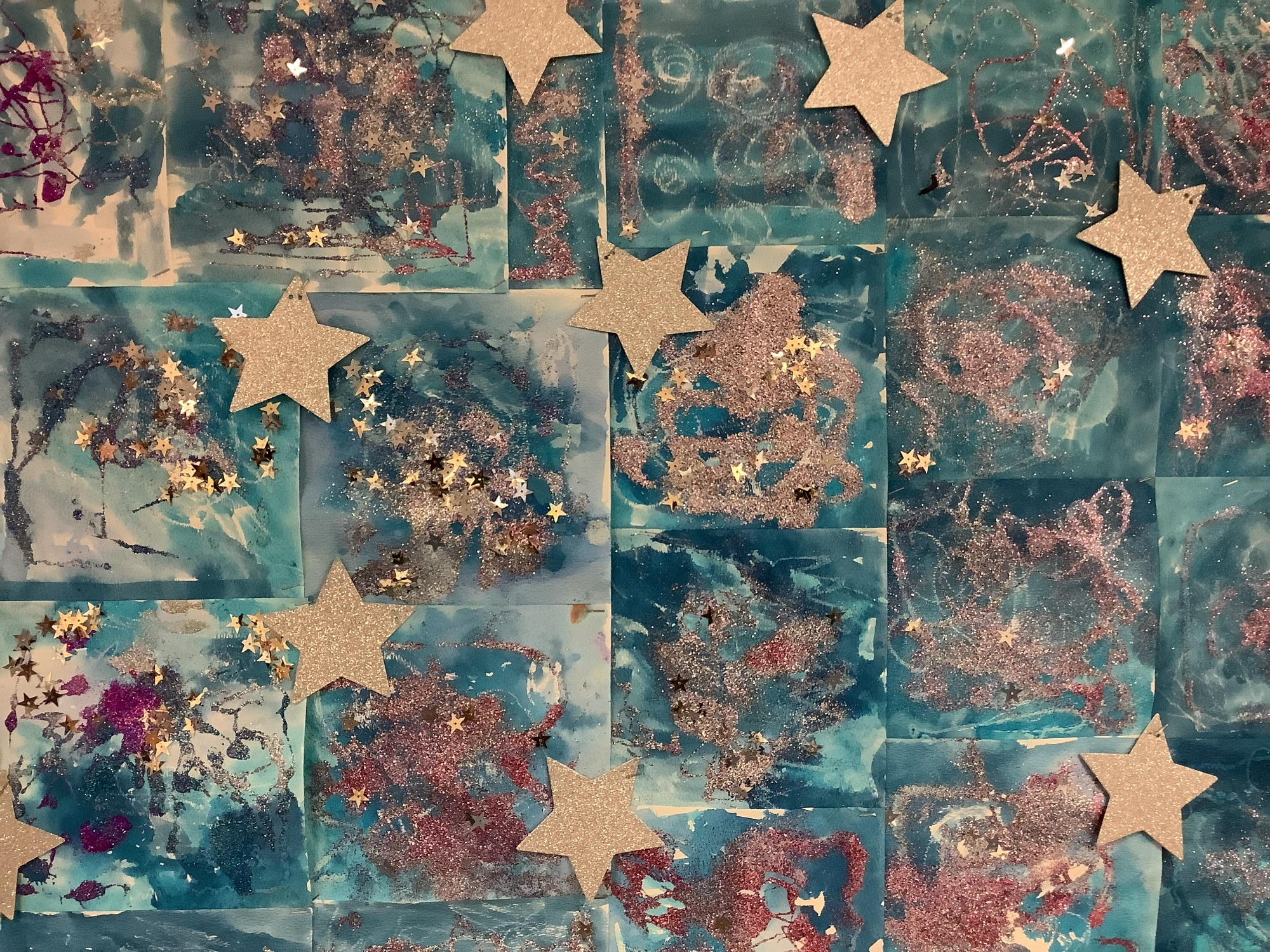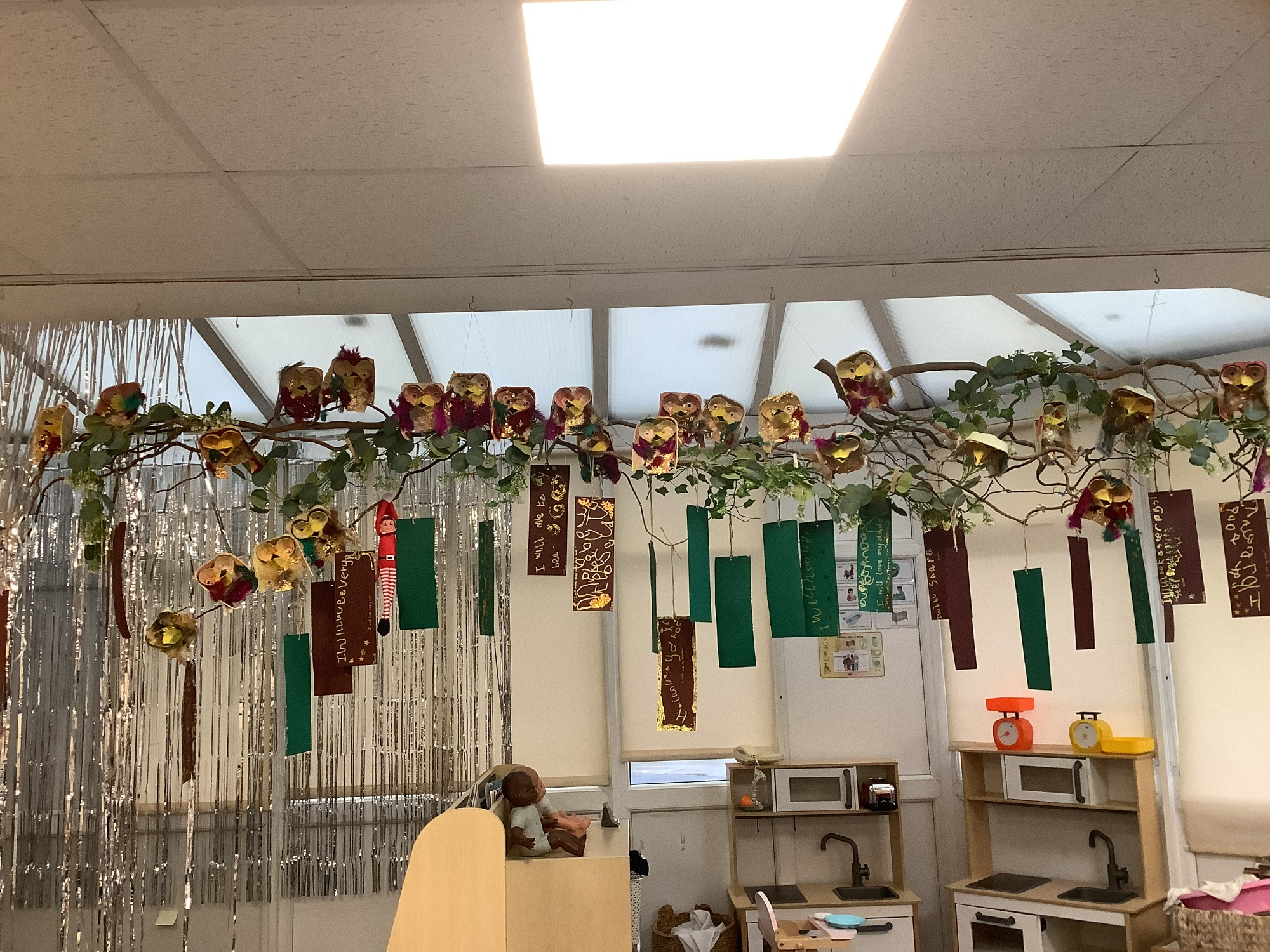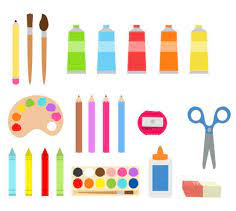Art
Our Curriculum
“Art is not just a subject to learn, but an activity that you can practise with your hands, your eyes, your whole personality.”
-Quentin Blake, Children’s Laureate
Intent
The purpose of Art and design is to give children the skills, ideas and information necessary for them to express their reactions to ideas and experiences in a visual or tactile form. Art can fire imagination and enable children to use what they learn about media and materials in original ways, thinking about uses and purposes. Art and design will help children to represent their own ideas, thoughts and feelings through art, design, music, role play and stories.
At Holy Rosary at the heart of the Art Curriculum is expression and two of the main aims for our scheme are to build children’s artistic knowledge and to develop children’s creative competencies. At Holy Rosary Primary School, we want our children to love art, craft and design. Our Art curriculum is designed to engage, inspire and challenge pupils, whilst equipping them with the knowledge and skills to be able to experiment, invent and create their own works of art. As pupils progress, they should gain a deeper understanding of how Art and Design reflects and shapes our history, and how it contributes to the culture and creativity of our world. We want to equip our children with not only the minimum statutory requirements of the Art and Design National Curriculum but to prepare them for the opportunities, responsibilities and experiences of later life. We want our children to learn from other cultures and to respect diversity. To that end, we have carefully selected a wide range of unique and diverse artists, craft makers, architects and designers for children to study.
Implementation
The teaching and implementation of the Art and Design Curriculum at Holy Rosary Primary School is based on the National Curriculum and linked to topics to ensure a well-structured approach to this creative subject.
At Holy Rosary we follow the Kapow scheme of work for Art and Design which is designed with five strands that run throughout.
These are:
● Generating ideas
● Using sketchbooks
● Making skills, including formal elements (line, shape, tone, texture, pattern, colour)
● Knowledge of artists
● Evaluating and analysing
Units of lessons are sequential, allowing children to build their skills and knowledge, applying them to a range of outcomes. The formal elements, a key part of the National Curriculum, are also woven throughout units. Key skills are revisited again and again with increasing complexity in a spiral curriculum model. This allows pupils to revise and build on their previous learning. Units in each year group are organised into four core areas:
● Drawing
● Painting and mixed-media
● Sculpture and 3D
● Craft and design techniques, developing their skills and thinking as young artists.
Our units fully scaffold and support essential and age appropriate, sequenced learning, and are flexible enough to be adapted to form cross-curricular links with our school’s curriculum. Creativity and independent outcomes are robustly embedded into our units, supporting students in learning how to make their own creative choices and decisions, so that their art outcomes, whilst still being knowledge-rich, are unique to the pupil and personal.
The skills and knowledge that children will develop throughout each art topic are mapped across each year group and are progressive throughout the school. The emphasis on knowledge ensures that children understand the context of the artwork, as well as the artists and cultures that they are learning about and being inspired by. This enables links to other curriculum areas, including science and humanities, with children developing a considerable knowledge of specific artists, as well as individual works and art movements. A similar systematic approach to the development of artistic skills means that children are given opportunities to express their creative imagination, as well as practise and develop mastery in the key processes of art such as drawing, painting, printing and sculpture.
Coordinated whole-school project work ensures that art is given high status in the curriculum. This includes the school’s participation in the annual Arts Week which enables further focus on children’s artistic skills and knowledge. Children in every year group and key stage celebrate work on a chosen theme and celebrate and enjoy each other’s art and creativity through a variety of music, song, poetry, drama, dance and artwork.
The school’s high-quality art curriculum is supported through the availability of a wide range of resources, which are used to support children’s confidence in the use of different media. The school’s locality is also utilised, with planned opportunities for learning outside the classroom, as well as the involvement of adults with specialist skills from the local and wider community.
Well planned series of lessons are designed to stretch and challenge learners appropriately. A variety of formative assessment opportunities form part of the planned learning activity.
When available staff and outside agencies provide after-school and or lunchtime sessions and clubs to develop artistic creativity.
In the EYFS there is continuous provision of art and design opportunities, these activities make important contributions to children’s development in the areas of Expressive Arts and Design and Communication and Language. Art is also important in children’s personal, social and emotional development. Art is covered in art lessons, continuous provision and as a means of communication and learning in other curriculum areas.
Impact
Children become increasingly more independent as they further experiment. Children use art to explore and cross other curriculum subjects and discover other cultures and through creative processes they look at the world with new eyes and gain new knowledge and skills.
Holy Rosary School’s Primary’s curriculum is designed in such a way that children are involved in evaluation, dialogue and decision making about the quality of their outcomes and the improvements they need to make.
By taking part in regular discussions and decision making processes, children will not only learn and know facts and key information about art, but they will be able to talk confidently about their own learning journey, have higher metacognitive skills and have a growing understanding of how to improve.
The impact of our scheme can be constantly monitored through both formative and summative assessment opportunities. Each lesson includes guidance to support teachers in assessing pupils against the learning objectives.
After the implementation of Kapow Primary’s Art and design scheme, pupils should leave primary school equipped with a range of techniques and the confidence and creativity to form a strong foundation for their Art and design learning at Key Stage 3 and beyond. The expected impact of following the Kapow Primary Art and design scheme of work is that children will:
★ Produce creative work, exploring and recording their ideas and experiences.
★ Be proficient in drawing, painting, sculpture and other art, craft and design techniques.
★ Evaluate and analyse creative works using subject-specific language.
★ Know about great artists and the historical and cultural development of their art.
★ Meet the end of key stage expectations outlined in the National curriculum for Art and design.
The structure of the art curriculum ensures that children are able to develop their knowledge and understanding of the work of artists, craftspeople and designers from a range of eras and cultures and apply this knowledge to their own work. The consistent use of children’s sketchbooks means that children are able to collect, record, review, modify and revisit and develop their initial ideas in order to achieve high quality outcomes. Children learn to understand and apply the key principles of art: line, tone, texture, shape, form, space, pattern, colour, contrast, composition, proportion and perspective. The opportunity for children to refine and develop their techniques over time is supported by effective lesson sequencing and progression between year groups. This also supports children in achieving age related expectations at the end of their cohort year.
Classroom displays reflect and celebrate the children’s sense of pride in their artwork and this is also demonstrated by creative outcomes across the wider curriculum. The school environment also celebrates children’s achievements in art and demonstrates the subject’s high status in the school, with outcomes, enhancing the school environment. The Art curriculum at Holy Rosary Catholic Primary School contributes to children’s personal development in creativity, independence, judgement, self-esteem and self-reflection.








Achievements
Earlier this term, children in Year Five entered the Dot Art Schools Competition. A panel of judges initially chose a selection of artwork to represent each school, after which a public vote took place. Oscar Moran was voted the winner and Pippa Wright and Nathan Parker were runners-up. As a result, the children and their families were invited to attend an award ceremony at St. George's Hall on Wednesday 5th June, and Oscar's winning artwork is now on display in the Walker Art Gallery until 7th July.
We are all so proud of Oscar, Pippa and Nathan and this fantastic achievement!

